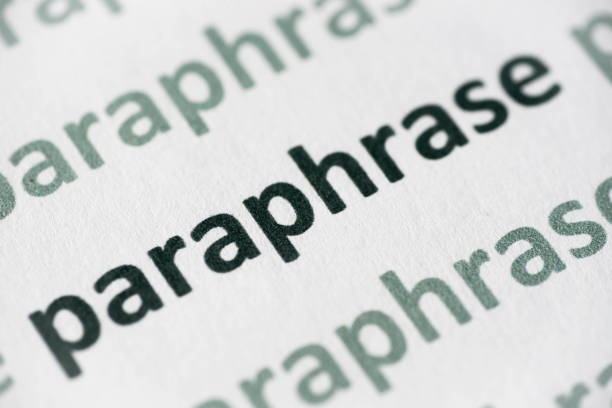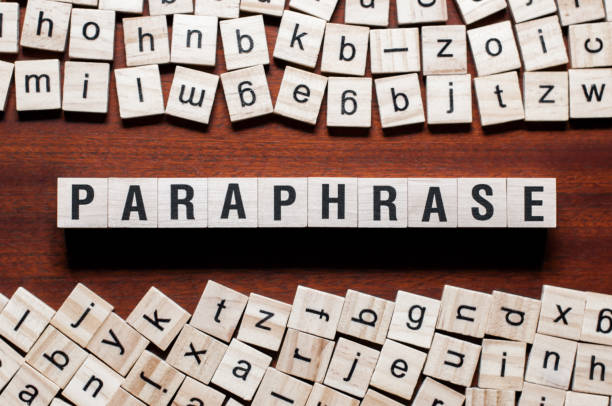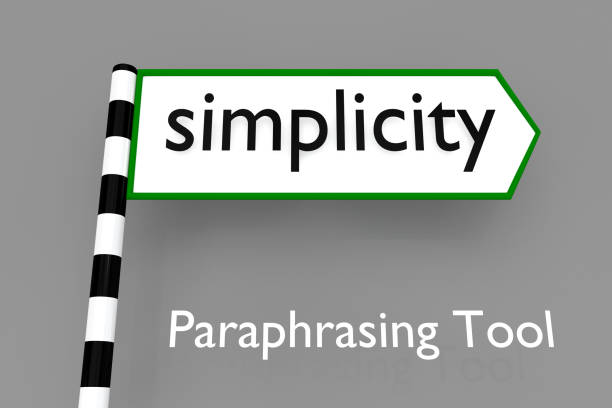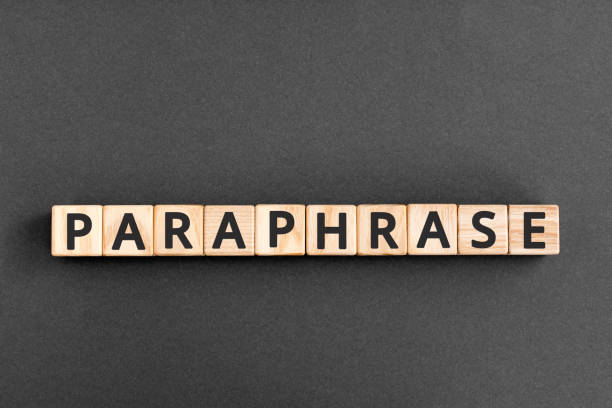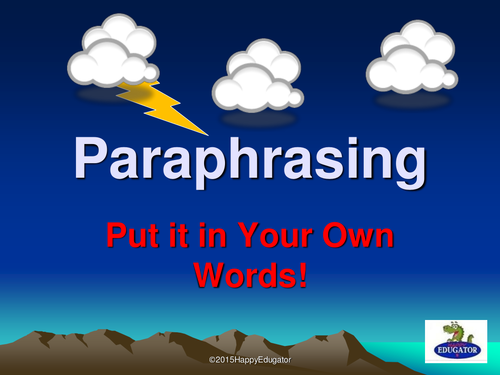How to Paraphrase an Assignment!
Much of your academic work will incorporate the significant ideas, writings, and discoveries of professionals in your field of study. Incorporating the works of others into your projects can be accomplished through quoting, paraphrasing, and summarizing.
You can deepen and illustrate your comprehension and interpretation of the major ideas/concepts of your discipline through paraphrasing and summarizing, while avoiding plagiarism.
The analytical and writing skills required for paraphrasing and summarizing are vital for success in college.
The educational norms and criteria for students’ academic writing, including assignments, research papers, and theses, have become more stringent throughout time.
Unique, accurate, and completely topic-relevant writing tasks are always dreaded by students. However, not all students are equally skilled in writing exceptional assignments.
Many students seek shortcuts, such as a paraphrase tool, to complete their tasks in significantly less time and with far less effort than manual writing.
A large number of pupils choose paraphrasing for assignments and other academic work.
Depending on their goals and available time, students either manually or automatically paraphrase with software.
In this post, we will cover the most effective strategies for students to paraphrase an assignment in order to protect their scores and reputation.
What is a paraphrasing tool?
How to Paraphrase an Assignment!
A tool for paraphrasing is defined as software or a service that modifies the format of material without altering its meaning. The terms are absolutely unique and distinct, however the meaning remains unchanged and the same point is maintained. Numerous distinct individuals can utilize it, for instance:
- When writing new content from a source that cannot be copied, marketing professionals have a huge need for paraphrase solutions. It enables them to have original copy and texts for campaigns while avoiding infringement of copyright.
- Students frequently encounter professors with unreasonable expectations. This is largely due to anti-plagiarism software getting more intelligent at spotting duplicate content. Instead of introducing fairness to educational systems, these programs label any three-word sequence as plagiarized.
- This makes writing an essay or homework impossible. There are common phrases and idioms that are significantly longer than three words, making it impossible to achieve a passing mark.
- Professionals from a variety of industries want paraphrasing tools to create fresh ideas and adapt their work to the circumstances. Occasionally, they prepare a report or a project but lack the time to format it properly.
Education’s future lies in digitization and automation. No longer will students suffer the sad reality of their research papers being rejected due to a flawed algorithm in an artificial intelligence system.
How to Paraphrase an Assignment utilizing the online paraphrase tool on EssayOnTime?
How to Paraphrase an Assignment!
Because EssayOnTime specializes in online paraphrasing, the assignment word changing tool can be utilized in two distinct ways. Both will be explained to you in precise detail.
- The first way to use paraphrase software is to compose content prior to submitting it to EssayOnTime. During this period, it is not necessary to be original. Take whatever you want from the necessary sources and develop a unified content structure.
You can then utilize the program to obtain custom-paraphrased content. These writers are experts in composing articles and tasks that cannot be recognized as copied by the most sophisticated anti-plag software.
- Using manual source delivery is the second option for online paraphrasing.
You choose the topic, give the references and instructions, and the tool generates a brand-new essay, article, or project for you. Each of these writers has vast experience paraphrasing and rephrasing any text from a reputable source.
How can the best essays be written in the most efficient manner?
How to Paraphrase an Assignment!
How do you know which approach to utilize in a given circumstance? It’s basic. First, verify the deadline for your assignment. If you have sufficient time and wish to practice your writing, we recommend the first method.
In addition to gaining knowledge, you will also contribute significantly to the formation of the material. By reading the sources as you copy them into your essay, you can also prepare for a potential oral examination or test.
Numerous academics do not use prepackaged exams. Instead, they assign homework and base the test on the facts they read in your article. It’s a terrific approach to assess your knowledge and save time preparing test questions.
You should utilize the second version of the paraphrase generator if time is running out. Gather all the necessary sources and establish a structure, and your essay will be complete in no time. However, you should set aside time afterward to read the essay and memorize its important themes.
If a professor or teacher suspects that you have plagiarized, they have every right to interrogate you about your essay. Few high school and college students are aware of this. Prepare for the possibility that they will be skeptical of your low rate of plagiarism. In addition, you will earn their respect if they observe that you are knowledgeable in your field.
Is it termed plagiarism to paraphrase?
How to Paraphrase an Assignment!
It is allowed to paraphrase if you interpret and synthesize the material from your sources, rephrase the ideas in your own words, and include sentence-level citations. It is NOT permissible to copy and paste substantial portions of an original source and make minor modifications in the hopes that your instructor, editor, or reviewer won’t notice.
Passing off the work of another as one’s own is a type of intellectual theft; therefore, researchers and students must learn how to paraphrase quotes and be diligent while describing the work of others.
The primary benefits of using a translation tool
How to Paraphrase an Assignment!
- Proofreading
If you submit an essay or project that has been completed, the tool can also employ an editor to perform proofreading services and repair any errors. It is an excellent approach to verify your grammar while avoiding plagiarism.
- Software academic writing phrased
Academic discourse is famously difficult to paraphrase since certain concepts cannot be expressed differently. Any source will be abridged, paraphrased, and expanded by writers with expertise in multiple subjects. They know how to circumvent algorithms and can assist you in avoiding issues.
- Sentence paraphrase generator
Can’t recall a precise synonym to finish a sentence? This tool will help you choose the best potential synonym for both the shorter and longer sentence. You will also receive instances of the identical content from real-time web search results.
- Synonymizer
Single-word text is the most difficult to paraphrase.
Utilize the tool to determine the best alternatives for paraphrasing and their usage contexts. There is nothing worse than inserting an inappropriate word into an essay.
How do I effectively paraphrase a source without plagiarizing?
How to Paraphrase an Assignment!
This may all be familiar to you. Nonetheless, you may be apprehensive and wondering, “How can I paraphrase a text appropriately without risking accidental plagiarism?”
Learning how to paraphrase a source or sentence is intimidating for many authors, especially those unfamiliar with the notions of a certain profession.
To avoid accusations of plagiarism, you must not only correctly document your sources using an acceptable style guide (e.g., APA, Harvard, or Vancouver) for your reference list or bibliography, but you must also carefully manage direct quotations and paraphrasing.
The Difference Between Paraphrasing and Quoting
How to Paraphrase an Assignment!
While quoting includes using the same words and punctuation from the source, paraphrase involves synthesizing the source’s material and restating it in your own words. Citing paraphrases is as important as citing direct citations.
Even if you grasp the difference between quoting and paraphrasing, you may still need further paraphrasing assistance or instruction on how to paraphrase a quote.
Paraphrasing vs. Summarizing
How to Paraphrase an Assignment!
Summarizing is when you address the major idea or overview of a text, but paraphrase is when you translate a direct statement into language that is easily understood by your audience.
Putting concepts into your own words is a common stage in both paraphrasing and summarizing.
However, summarizing and paraphrasing are separate from one another. The difference between paraphrasing and summarizing is that paraphrasing highlights a particular perspective from a source, whereas summarizing provides a summary of a whole subject, theme, or book.
In general, you can distinguish between paraphrasing and summarizing based on the length of what you’re writing. If you’re writing about a quotation, it’s a subtheme within a broader piece, thus you should paraphrase.
When discussing the themes or plot of a whole book, you would summarize. Typically, summaries are shorter than the source material.
How to paraphrase Sentences
How to Paraphrase an Assignment!
When learning how to paraphrase a quote, you must first determine if a text should be paraphrased or explicitly quoted.
If you find a quote from a credible source that matches your main topic, supports your argument, and provides credibility to your paper, but is excessively long (40+ words) or complex, you should paraphrase it. Long or complicated quotations can also be abridged by omissions and editorial alterations.
Direct Quote
Introduce the quote with a signal phrase (e.g., “According to Ahmad [2017]…”) and insert the complete quote, signifying it with quotation marks or indentation (i.e., a block quote).
Absences and Editorial Alterations
If you just need to use portions of a lengthy quotation, you can indicate omissions with an ellipsis (…). You can also make editorial changes within square brackets.
Remember that you must appropriately portray the author’s objective when employing this method. This is a type of intellectual dishonesty, therefore do not change key terms in a citation to make it fit your argument better.
Changes within square brackets should only be made to clarify the content without altering its meaning within the context of the entire paper (e.g., clarifying antecedents and matching verb tense). They indicate to the reader that these modifications were made by the essay’s author and not the original author.
Paraphrasing
Demonstrate that you fully comprehend the material by presenting its essential points in your own words and manner. Now you may be wondering, “Do paraphrases require citations like direct quotes?” The response is an emphatic “yes.”
Everything You Need to Know about How to Paraphrase an Assignment
When selecting whether to paraphrase or quote, it is vital to determine whether the source’s precise words or the ideas are more relevant.
If the former is significant, consider explicitly quoting it. Consider paraphrasing or summarizing if the latter is essential.
When is it necessary to paraphrase information?
How to Paraphrase an Assignment!
When you cannot describe something more clearly or concisely in your own words, it is advisable to use direct citation. In the arts, especially literary studies, it is the recommended method of citing sources.
Retaining the original meaning of a lengthy quote while ensuring that it flows effectively in your article can be accomplished by condensing it. Nonetheless, direct citations are frequently discouraged in the sciences and social sciences, so keep this in mind while considering whether to paraphrase or quote.
Long passages that can be rewritten in your own words lend themselves well to paraphrasing. Consider paraphrase as a type of translation; you are translating a concept from one “language” to your own. The concept should be the same, but the language and sentence structure should be entirely different.
What Is the Aim of Paraphrase?
The objective of paraphrasing is to synthesize ideas from multiple sources in order to deliver information clearly and concisely to your audience.
As a student or researcher, it is your responsibility to demonstrate that you comprehend the content by expressing ideas from other sources in your own words and giving proper citations to paraphrased information.
If you believe that the objective of paraphrasing is to assist you in avoiding independent thought, you are misinformed.
Understand the Text You Are Rephrasing
How to Paraphrase an Assignment!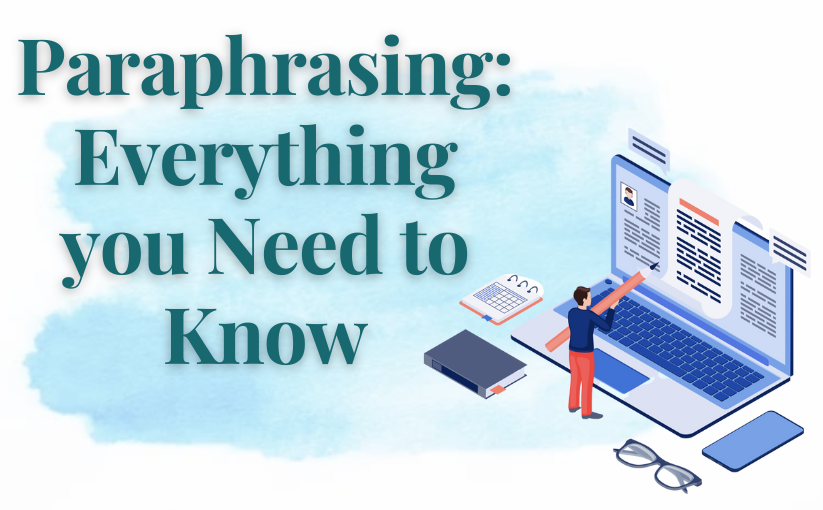
When paraphrasing, ensure that you have a thorough understanding of the original material. The objective of paraphrasing is to interpret the researched information for the reader, describing it as if you were speaking to a colleague or professor. In conclusion, paraphrase is a skill that indicates text understanding.
Example of Paraphrasing
Here is a little paraphrase example illustrating how to reference paraphrased material. These are the first lines of one of Juliet’s most renowned monologues “O Romeo, Romeo! Why art thou Romeo? / Deny thy father and deny thy name; / Or, if thou wilt not, be sworn my love, / And I shall cease to be a Capulet ” (Romeo and Juliet, 2.2.880–884).
If you required to paraphrase these sentences for an essay, you could do so in the following manner:
Juliet ponders why Romeo’s family name is Montague and concludes that they may be together if one gave up their name (and thus their family associations) for the other (Romeo and Juliet, 2.2.880–884).
A Guide to Citing a Paraphrase
Generally speaking, a paraphrased sentence must end with an in-text citation.
However, if your paraphrased information consists of multiple sentences, you should consult your preferred style guide. Some style standards (such as APA) require a reference following the first paraphrased statement. Other style standards (such as MLA) require a citation following the final paraphrased sentence.
Remember that it is not necessary to cite every single sentence of paraphrased material in a multi-sentence paraphrase, regardless of the style guide you employ.
Do Not Begin Paraphrasing by Using a Thesaurus
It may come as a surprise, but a thesaurus is NOT the solution to the problem of paraphrasing. Why? Patchwriting is a form of plagiarism that involves using a thesaurus to replace a few words here and there from an original source.
Unless you are entirely unsure of a word’s meaning, you shouldn’t need to consult a thesaurus; in that case, a dictionary may be more useful. When reporting findings (or other material) from a study, you should ideally be able to utilize clear, uncomplicated language that you are comfortable with.
The difficulty with utilizing a thesaurus to paraphrase a text is that you are not actually using your own words; rather, you are taking terms from a book. In addition, if you are unfamiliar with a subject or have problems with the English language, you may choose the incorrect synonym and end up with a paraphrase such as “You may choose an incorrect word.”
This is a common error made by authors who are unfamiliar with the subject matter or who do not have a solid understanding of the English language or the aim of paraphrasing.
Do not copy without the use of quotation marks
If you wish to retain a few sentences from the original source while paraphrasing the rest (i.e., combining quoting and paraphrasing), that is acceptable; however, remember that the source material must be quoted exactly.
Direct quotations consist of more than three consecutive words copied from another source; they must always be enclosed in quotation marks or formatted as a block quotation.
Example of Paraphrasing using a Direct Quote
Combining a direct quote with paraphrased material would result in the following sentence structure.
In “The Laugh of the Medusa,” Cixous emphasizes women’s writing as a particular accomplishment and discusses “what it will do” when it receives the same formal acknowledgment as men’s writing (Cixous 875).
The paraphrased paragraph of Cixous’ essay has a direct quote and a reference for the paraphrase.
Even if you offer an in-text citation, duplicating elements of a quote without quotation marks (also known as patchwriting) is considered plagiarism. If you have paraphrased portions of a statement in your own words, just enclose direct quotations (three or more words) in quotation marks to show that the work is not your own.
Don’t Rephrase Excessively
When learning how to paraphrase, you must differentiate between proper and incorrect forms. The Office of Research and Integrity, a division of the United States Department of Health and Human Services, states:
Taking sections of text from one or more sources, giving credit to the author/s, and making only “cosmetic” alterations, such as replacing one or two words or rearranging the order, voice (active vs. passive), and/or tense of the sentences, is NOT paraphrase.
How to Paraphrase an Assignment and Tips for Correct Paraphrasing
In an article on how to paraphrase, the Purdue University Online Writing Lab advises readers to carefully study the source material and record paraphrases on notecards. Then, you may compare your version to the original to ensure that you’ve included all the essential information and to identify any terms or phrases that have been paraphrased too closely.
You should identify your notecards with the source’s author(s) and citation information so you don’t lose track of which source you used. Additionally, you should indicate how you intend to apply the paraphrasing in your essay.
Notate on notecards the paraphrases of the source material.
If you are a visual learner, this method will allow you to envision the text you will be paraphrasing.
Because a notecard is a tangible entity, you may physically organize it in an essay outline, shifting the necessary information to the proper paragraph to ensure that your essay flows well. Check read our article if you’re unsure about how to build an outline.
In addition, having a physical duplicate of paraphrased information makes it more difficult to mistakenly plagiarize by copying and pasting content from an original source without correctly paraphrasing or quoting it. You can remove yourself from the source text and present the idea in your own distinctive way by writing down your paraphrase.
Paraphrase from Your Own Point-Form Notes on a Source
How to Paraphrase an Assignment!
Jerry Plotnick from the University College Writing Centre at the University of Toronto gives a similar paraphrase method for more assistance.
Plotnick recommends taking point-form notes on the text you intend to utilize in your paper. Instead of using complete sentences, “capture the original idea” in a few words and record the source’s name.
Similar to the notecard approach, but with one additional step. While researching your sources, Plotnick suggests using point-form notes as opposed to simply reading the material carefully and writing your paraphrase on a notecard. You can use these notes to paraphrase the source material when drafting your paper.
Similar to writing your paraphrases by hand on notecards, taking notes and returning to them later will help you remove yourself from the source, allowing you to forget the original language and apply your own style.
How to Apply Plotnick’s Method to Rephrase
How to Paraphrase an Assignment!
The Plotnick method outlined above illustrates how to use point-form notes when conducting research for a paper to ensure original paraphrasing. Examine your sources and try the following to paraphrase using Plotnick’s method outlined above:
- On notecards, jot down the key points you wish to discuss (in your own words).
- When writing your essay, incorporate your notecard points into whole sentences.
- Include the citation for the source.
- Compare your paraphrase to the original source to ensure that you have used your own language.
FAQs About How to Paraphrase an Assignment
What are the 5 steps of paraphrasing?
Step 1: Read the text. Step 2: Remove the text. Step 3: Explain the text out loud.
(Repeat Steps 1 and 2, if necessary.)
Step 4: Write down your paraphrase.
Step 5: Confirm facts, statistics, and spellings with the original text.
5 Steps to Paraphrasing.
Author Ideas.
© 2007 Smekens Education Solutions, Inc.
How does a paraphrase look like?
Rephrasing entails rewriting a passage, whether it is spoken or written. As you will see in the samples below, writers frequently rephrase words and paragraphs to communicate information in a more concise manner. It is essential to maintain the original meaning while paraphrasing so that the facts remain intact.
What are the 4 R's of paraphrasing?
Review the graphic below that explains the 4 R's: Read, Restate, Recheck, and Repair and use the attached graphic organizer to help you practice paraphrasing by using this strategy.
What is most important in a paraphrase?
Before attempting to paraphrase a text, it is crucial to ensure that you have a thorough understanding of the original. Before attempting to paraphrase, carefully read the text you wish to rewrite. Consult your dictionary for any words you do not comprehend.
Conclusion
In conclusion, the objective of paraphrasing is not to merely change a few words; rather, it is to express ideas using an altogether different sentence structure and word selection. It has a wider purpose; it demonstrates that you have studied and comprehended the relevant literature and are able to articulate your understanding properly to the reader.
In other words, appropriate paraphrasing demonstrates familiarity with the concepts in your subject and allows you to cite your own study inside the text.
Understanding when to paraphrase and when to cite helps research presentations and arguments. Asking for assistance with paraphrasing before mistakenly plagiarizing demonstrates that you recognize the importance of academic integrity.
Consider an editing and proofreading service such as Scribendi if you require assistance. While our editors cannot paraphrase your sources for you, they can use our Academic Editing service to verify that you’ve referenced them correctly according to your target style guide.
Even if you require more than just paraphrase citation checks, our editors can assist you in determining whether a direct quote is stronger as a paraphrase or vice versa. Editors cannot paraphrase quotations for you, but they can assist you in learning how to do it appropriately.

